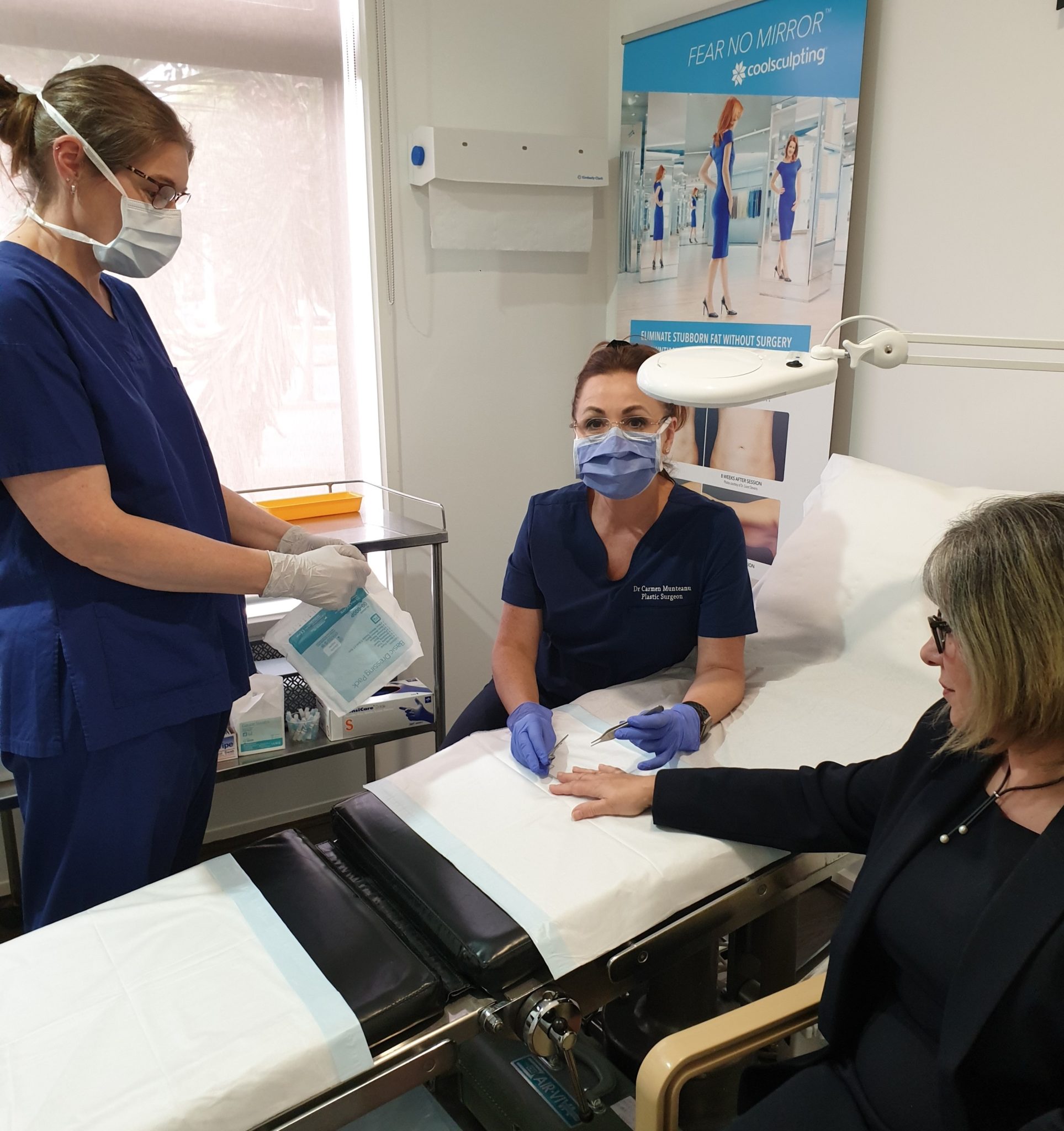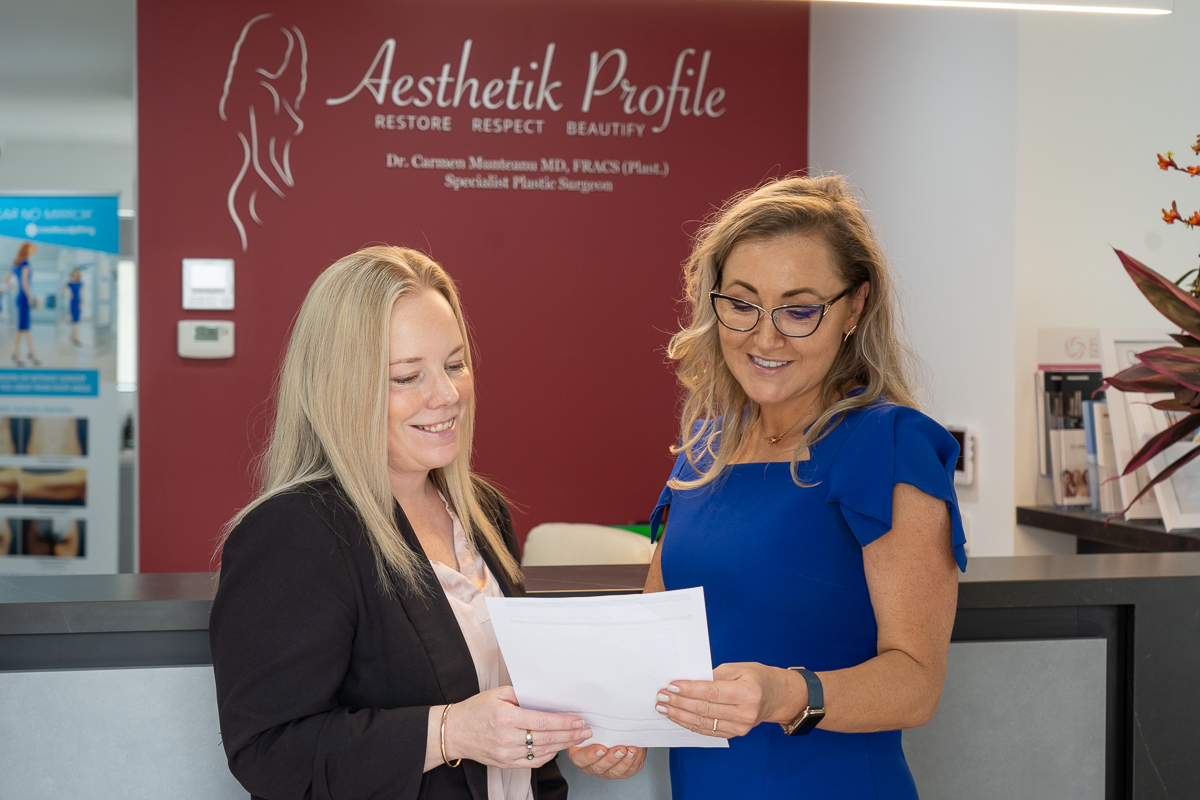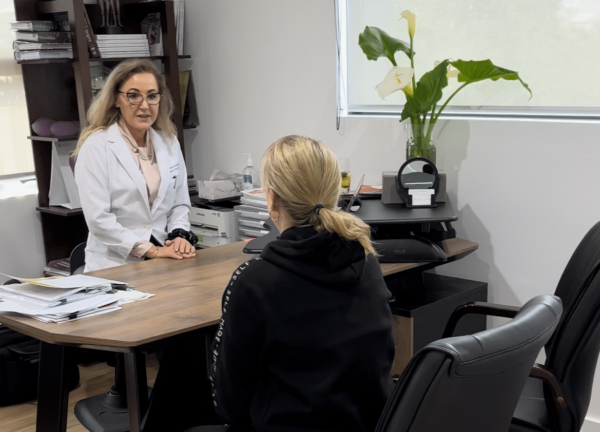Bigger, fuller and perkier breasts have always been in demand as a signal of femininity and sex appeal. Today, all you need to do to make your breasts look better is find a good plastic surgeon and get breast implants. However, it hasn’t always been that easy. This article takes a look at the history timeline of breast implants and learn how they developed to revolutionize modern-day breast augmentation.
Breast implants, as you know them, are relatively new. The first breast implant was used merely 6 decades ago, which is somewhat recent history. Before then, women injected unimaginable things into their boobs to make them bigger. And the results were (unsurprisingly) not always so great.
Since then, breast implants have come a long way. Medical Implant Manufacturers have developed innovative technologies to ensure safety, durability, and natural results. New generations of silicone breast implants are giving women great results. Anatomical implants, round implants, gummy bear implants, textured implants, smooth implants. There are many choices and implants are popular. We’ve come a long way since the first breast augmentation.
Take our Plastic Surgery Quiz to find out if you’d be a good candidate and if you are ready for cosmetic surgery.
Breast Implants History & Timeline
Breast implants and breast augmentation did not start out the way they are today. Many techniques used in the history of breast enhancement were unsafe, ineffective, and sometimes just… strange.
1895 – The First Breast Enhancement
In the year 1895, an Austrian-German surgeon called Vincent Czerny reported the first breast augmentation ever. He performed breast reconstruction after removing a large tumor from a woman’s breast.
To prevent asymmetry and deformed breast appearance, he decided to replace the explanted tissue. He used a piece of fat, taken from the patient’s own thigh, and implanted it in her breast.
This was the first recorded proper cosmetic breast surgery in history.
1900-1950 Weird Breast Injections
During the late 1800s and early 1900s, many women thought it was a good idea to inject paraffin oil into their breasts to make them bigger. In case you’re wondering, paraffin oil is petroleum jelly mixed with olive oil.
Needless to say, this was not the best idea. It was later discovered that paraffin oil has horrible effects when injected directly into body parts. It caused a foreign body reaction, which led to chronic inflammation, hard breast lumps (paraffinoma), tissue death (necrosis), brain strokes, and lung embolisms.
Paraffin oil was not the craziest thing that was put into breasts to make them bigger. The history of breast enhancement is full of people trying out weird injectables. Vegetable oil, mineral oil, beeswax, ox cartilage, rubber, goat milk, peanut oil, silk fiber, and even snake venom were all tried out at one point as a method for breast augmentation.
As you’d expect, most of these were either harmful or ineffective.

1940-1950 Silicone Injections
Before silicone implants were invented, some women injected silicone gel or oil directly into their breasts to make them larger. This was reported as a practice that took place among Japanese prostitutes after world war two, in an attempt to seduce foreign soldiers.
Injecting silicone directly into the breasts carried a LOT of risks and complications. Silicone granulomas, chronic inflammation, lung embolism, liver inflammation (hepatitis), skin sloughing, and even death were all reported with using silicone injections. Some dodgy overseas doctors still inject these liquid materials for butt enhancement. Don’t do it.
1958- Polyvinyl Alcohol
Polyvinyl alcohol looks and feels like your average sponge. In 1958, some surgeons started using it as a breast implant. It was cut into a round shape and surgically inserted into the breasts to make them bigger. The body reacted aggressively against these implants and formed scar tissue around them, which led to breast shrinkage and deformity.
1962 – First Silicone Implant
The first silicone breast implant arrives
Cronin and Gerow, two American plastic surgeons, were the first to design and use silicone breast implants. The first breast augmentation with silicone implants ever done was on Timmie Jean Lindsey, a 29-year-old single mother from Texas. She went on to keep her implants for 50 years and was fairly satisfied with the results.
The two physicians had been working on developing silicone gel for a few years. The end result was the first breast implant with a very thick outer shell and inner silicone gel filling. This was the prototype implant that gave rise to the modern silicone breast implants, and it was nothing less than a medical breakthrough.
1964- First Saline Implant
Saline implants are implants that have an outer silicone shell and are filled with saline (saltwater) instead of silicone gel.
The first-ever saline breast implant was invented in 1964 by a French company. It had a rudimentary design with a thin shell that was prone to rupture. Nevertheless, this was the first step toward a new popular category of breast implant.
1969- Textured Anatomical Breast Implants
Up to this point, all breast implants, whether saline or silicone-filled, were round in shape and had a smooth (silky) surface.
In 1969, Dr. Franklin Ashley developed a new kind of implant that would go on to become very popular in the years after. Dr. Ashley invented the anatomical implants, which were teardrop-shaped to give breasts a more natural look.
Not only that, but he also introduced the concept of textured surfaces. He used a Polyurethane Foam (P-URE) shell for his implants, which he thought would reduce capsular contracture and implant dislocation or malrotation. And he was right. Textured anatomical implants were (and still are) useful for these benefits. (Note – the rise of BIA-ALCL concerns has recently reduced the use of textured implants – but they still have a use and some advocates)
1970-1992 The Era on Innovation
During the early 70’s, the demand for breast implants was skyrocketing. Manufacturers were racing to make bigger and better implants. New silicone technologies were developed to make the implants more durable, natural-feeling, and safe.
However, simultaneously, many patient advocacy groups started denouncing silicone implants and labeling them as cancer-causing devices. Early low-quality silicone implants did indeed cause many complications, like implant rupture, silicone migration, granuloma formation, and capsular contracture.
1992- The Silicone Implant Ban in USA
Public concern and the lack of actual safety data led to a moratorium on silicone-filled implants in the USA and Canada in 1992 for about 14 years.
1992-2006 Rise of Saline Implants in USA
After the USA silicone-implant ban, it was time for saline implants to shine. They were the only accessible implants in the USA and Canada – two major markets for breast augmentation. Almost 95% of implants used in those countries during this time were saline-filled. This led to better and more advanced saline implants.
However, since in the rest of the world – including Australia – women could still get silicone breast implants and they were the most popular choice. Newer generations of implants offered many new features.
Natural look, natural movement, natural feel, fewer risks. They were a huge success.
TV shows and movies were popularizing breast augmentation and implants, and the number of women requesting the procedure grew.
2006- Silicone Implants available again in USA
After reviewing all the available evidence and comprehensive clinical trials, health authorities in the USA and Canada decided to lift the ban on silicone breast implants. They were back and in high demand. With newer generations of silicon implants now much better than the old ones.
2008- Boom in Breast Augmentation
From 2008 onward, breast augmentation became the most frequently performed cosmetic surgical procedure in the USA. The same trends followed in other countries as well, including Australia.
Women at the time were going for round, big, and perky breasts that just popped out. Big breasts were popular.
2017- Rise of Natural Looking Proportionate Breast Augmentation
The trend in breast augmentation changed a lot during this last decade. Patients now wanted more natural-looking breasts. It’s not only about size anymore. They want them to look and feel natural and proportional to the rest of their body.
2019- Fears of BIA-ALCL
In 2019, fears of breast implant-associated anaplastic large cell lymphoma (BIA-ALCL) grew and more reports started to arise. Global health authorities confirmed a link between textured breast implants, specifically Allergan’s Biocell textured implants, and BIA-ALCL.
This led to a product stock recall issued by Allergan in 2019, allowing patients with Biocell implants to get free replacement implants.
2021- A bright future
The future of breast implants is bright. New technologies are always being developed to tend to the ever-changing needs of women. We now know much more about the safety of breast implants. We know when and how they cause complications. Most importantly, we now know how to properly handle them. The 60 decades of breast implants have allowed plastic surgeons to master the field.
As for BIA-ALCL, it is now clear that it’s only associated with textured implants. This has led many surgeons to switch to smooth-surfaced implants while maintaining the same aesthetic results.
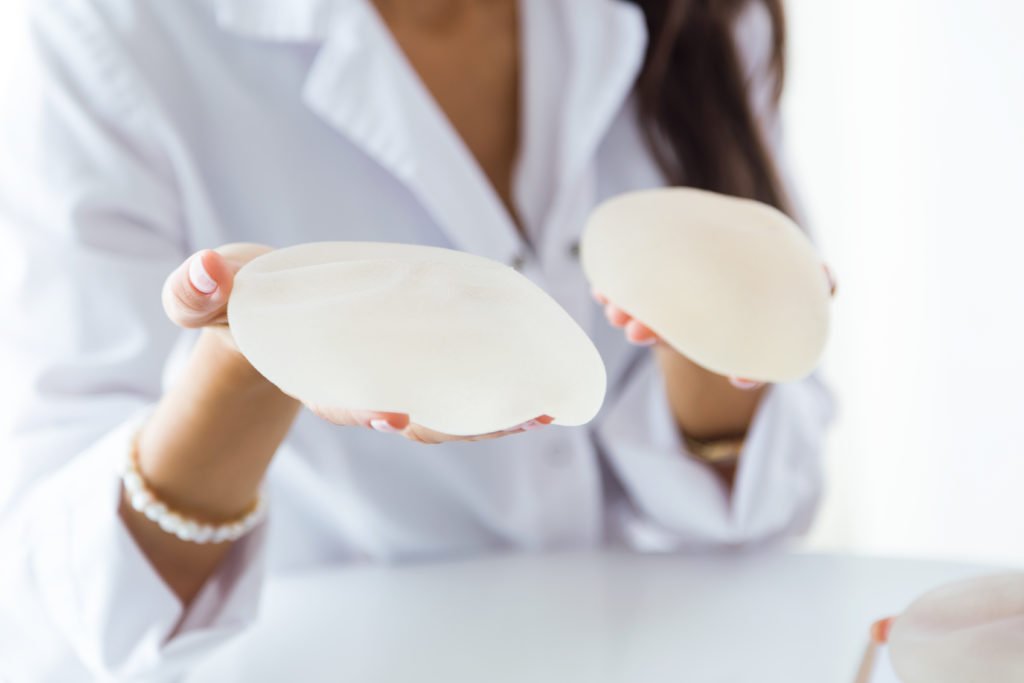
Six Generations Of Breast Implants
Since they were first used in 1962, several generations of breast implants have been developed:
1st Generation
The first generation of implants was founded in 1962 by Frank Gerow and Thomas Cronin, two American plastic surgeons. Their implants had thick shells and thick gel fillings, which were still far from resembling a natural consistency.
The first breast implant generation was a success despite its primitive technology. It remained in use for a whole decade before technology advanced. Despite their success, they had a high rate of capsular contracture.
2nd Generation
The second generation of breast implants made its debut in the early 1970s. The new implants had a thinner outer shell and softer filling. The goal was to make them feel more like the real thing, and they were indeed a step closer. The rate of capsular contracture was still too high.
3rd Generation
In the 1980s and 90s, manufacturers started using silica-reinforced shells and syrup-like gel fillings in breast implants. Nevertheless, there were growing concerns about the chemicals leaking into the bloodstream and migrating into other body regions. This was just before the USA and Canada took a decision to ban silicone implants in 1992.
4th Generation
The ban on silicone implants in USA was lifted in 2006 when the new generation of silicone implants made its debut. The new “responsive” gel was safer for medical use and provided excellent results. Many of the implants used today are 4th or 5th generation implants.
The 4th generation implants have a harder outer shell to prevent leakage. The gel filling is more cohesive and less likely to bleed out if a shell rupture occurs.
5th Generation
The 5th generation implants are very similar to the previous generation, however, they have an even more cohesive filling. Their inside resembles the consistency of a gummy bear. This allows them to hold their shape better and prevents the gel from leaking out if the implant ruptures.
Highly cohesive gummy-bear implants are widely used in anatomical (teardrop) implants since they can hold a stable form.
Download Dr Carmen’s Guide to Breast Augmentation with Implants
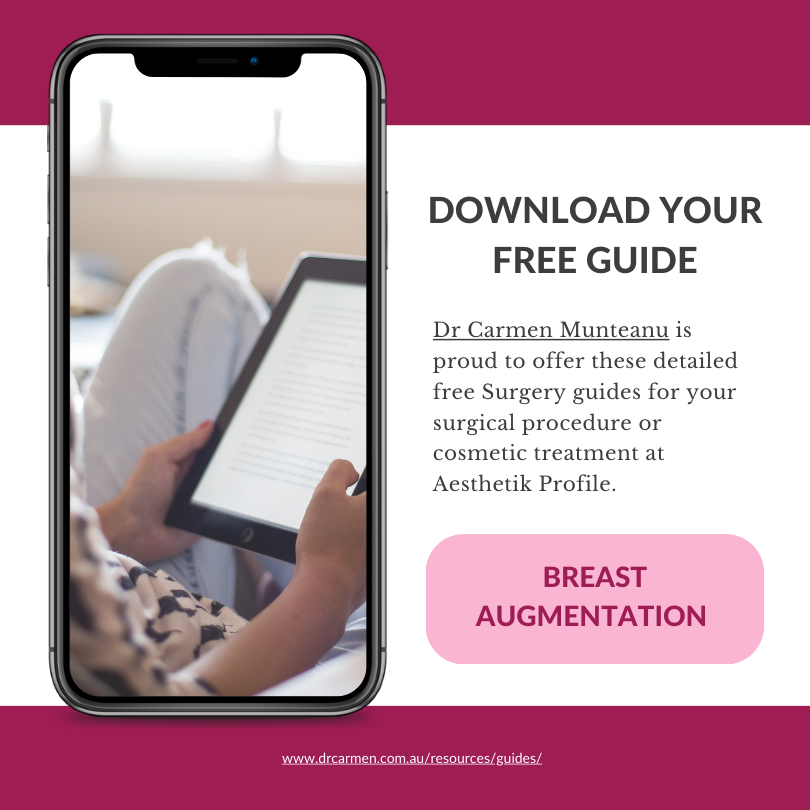
6th Generation Breast Implants – A Breakthrough
Motiva implants have announced that their new implants are a whole new generation of implants, given the features they have. They’ve implemented one-of-a-kind technologies to reduce implant complications and give patients more natural results.
Motiva is one of the brands that are highly trusted by Dr Carmen. She offers Motiva implants to patients who want the best breast implants in Melbourne.
Given this long and strange history of breast implants and breast enhancement, Dr Carmen only uses trusted and thoroughly studied brands on her patients. If you’re considering breast augmentation, now is the time to choose a Motiva Implant.
Further Reading
- Read Dr Carmen’s Blog about Understanding Breast Anatomy – Breast Cosmetic Surgery Terms and Concerns
- Read Dr Carmen’s Blog about How Big Is a C Cup? – Useful Advice for Breast Implant Surgery
- Read Dr Carmen’s Blog about How Long Do Breast Implants Last?
Medical References about the History of Breast Implants
- National Library of Medicine – Long-term safety and efficacy of polyurethane foam-covered breast implants
- National Library of Medicine – A new type of breast prosthesis. Preliminary report
- The Guardian Blog on 1992: New fears about breast implants
- Plastic and Reconstructive Surgery Article on A New Type of Breast Prosthesis – Preliminary Report
- BreastCancer.org Implant Illness and BIA-ALCL – What Is BIA-ALCL?
- Motiva Blog on 5 Decades & 5 Generations of Breast Implant Evolution – Disrupted by Motiva®
- US National Library of Medicine PMC on Complications from injectable materials used for breast augmentation
- Radiopaedia.org Blog on History of breast augmentation
- CNN Beauty Edition on From supersized to a more natural look: The evolution of breast implants
- Reuters Health and Pharma – Timeline: A short history of breast implants
- US National Library of Medicine PMC on History of Breast Reconstruction
- National Library of Medicine on The history and development of breast implants

